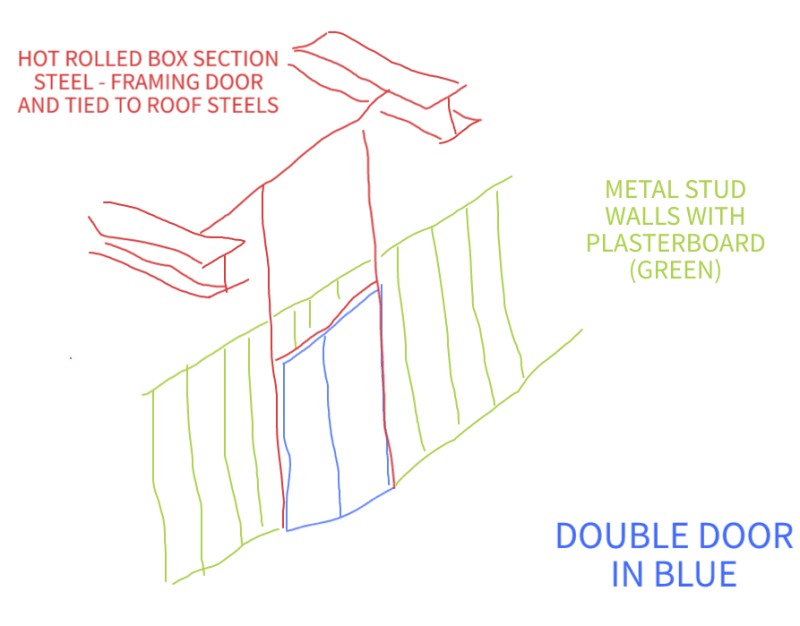interstructeng
Structural
- Jul 4, 2012
- 16
I do a lot of work in steel frame industrial buildings that have heavy duty steel double doors. We have been framing these doors out with proper hot rolled steel box sections (100mm x 100mm x 10mm box section for example - I think these are equivalent to 4 x 4 x 3/8 US size). The framing includes a post either side of the door, and a header beam above the door.
We then have to pick these up at roof level which could be a single story or double story height.
The partitions either side of the door are stud and plasterboard. We don't use timber generally.
I always have a sneaking suspicion that what we do is overkill, but the external Architects are always pushing for them - so am reluctant to push back.
Does anyone have any experience with this or do this also? Or even better an example where it wasn't done and caused an issue? (Cracked finishes, problems fitting the door etc.).
We then have to pick these up at roof level which could be a single story or double story height.
The partitions either side of the door are stud and plasterboard. We don't use timber generally.
I always have a sneaking suspicion that what we do is overkill, but the external Architects are always pushing for them - so am reluctant to push back.
Does anyone have any experience with this or do this also? Or even better an example where it wasn't done and caused an issue? (Cracked finishes, problems fitting the door etc.).

